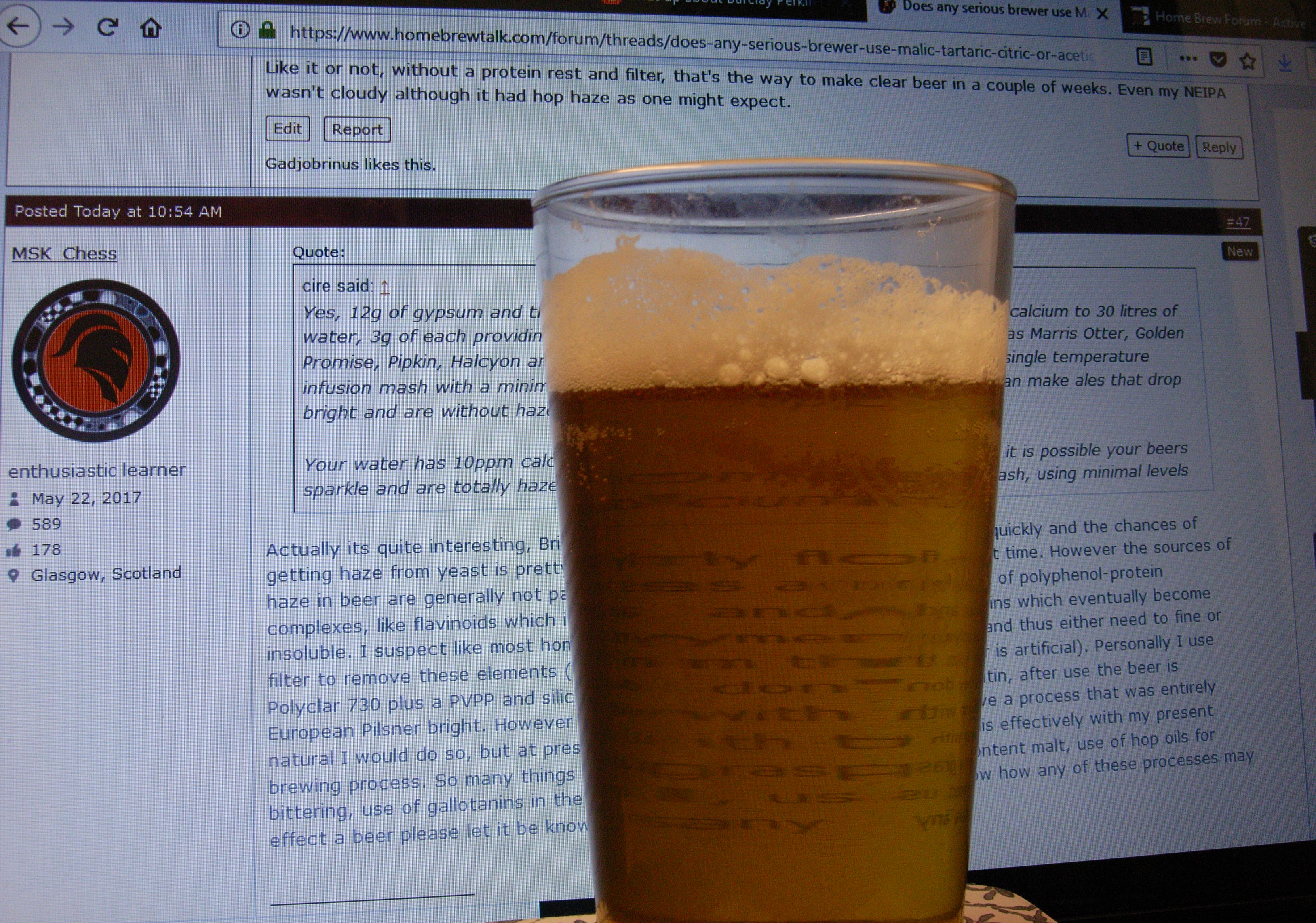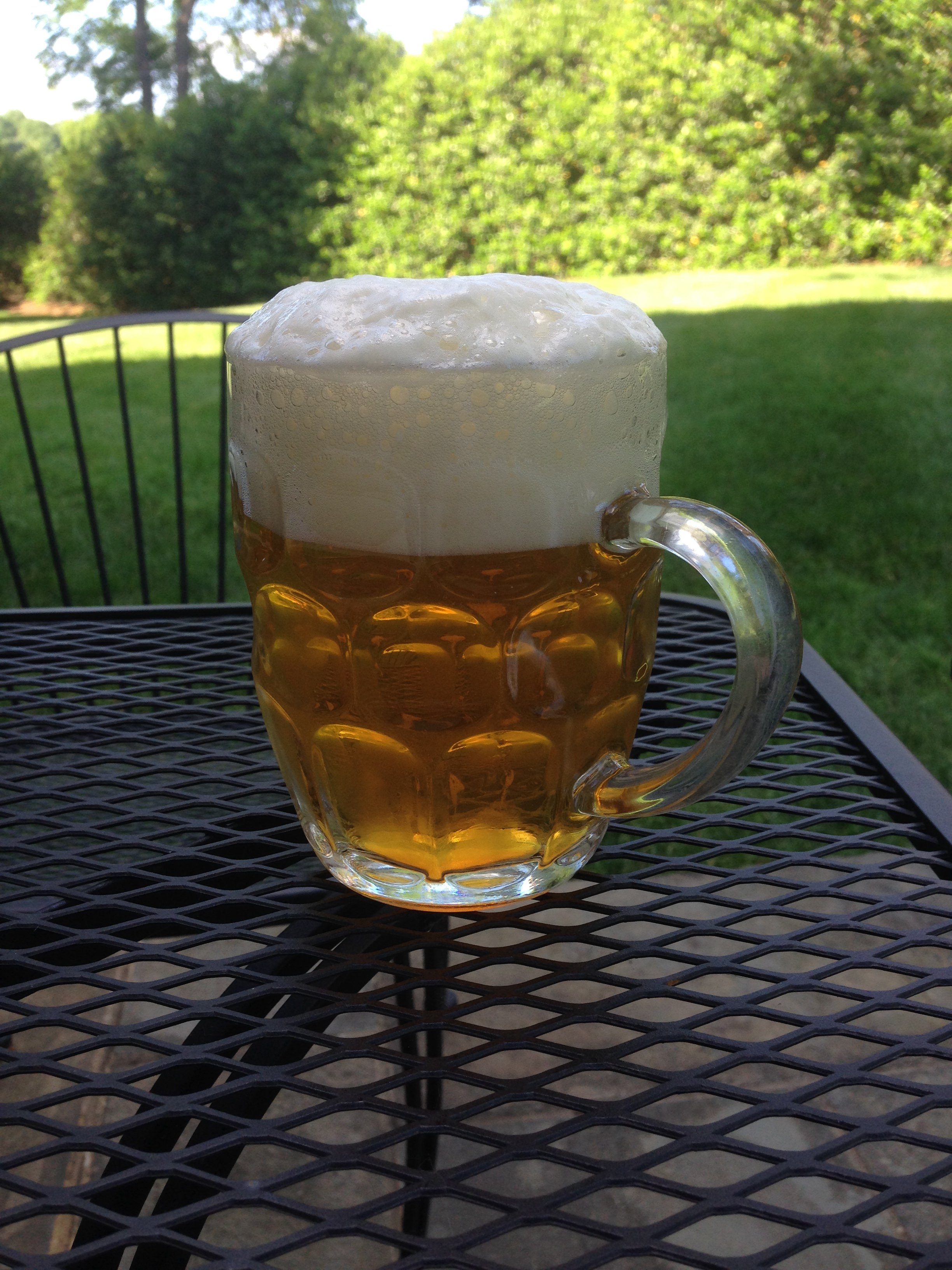Definitely interesting from an historical perspective. Some errors, of course, but it was written in 1955 and as such it is also naive in several regards in terms of what we now know about brewing water chemistry. But one place or another he seems to pick up all the advantages of calcium I gave in the list in No. 27.
Most interesting is his early explanation of the phosphate calcium recognition and failure to mention that the same reaction occurs with calcium and bicarbonate until much later when he mentions using it as a means of decarbonation IOW he is aware that pH is lowered in the mash tun by the phosphate reaction but unaware that this can happen with carbonate in the HLT too. Perhaps in commercial brewing where the volumes of liquor are so large relative to the home brewing scale the reaction is impeded by the inability of CO2 to escape.
He also mentions in a couple of places that precipitation of phosphate reduces the buffering of mash and wort seeming to be unaware that mash and wort pH are where the buffering of the phosphate system is mininimum i.e. about half way between the first two pK's of phosphoric acid.
WRT to sulfate to chloride ratio: It is quite clear that he understands, from his description of what those two ions do, that their concentrations represent two degrees of freedom. Thus when he talks about ratios he is talking about the relative amounts of the independent effects of those ions desired.
He also seems unaware that liquor decarbonated by lime treatment is not excessively alkaline (about 1 mEq/L) if the treatment is properly carried out. It is thus not necessary to add additional acid or an acid salt unless alkalinity below 1 mEq/L is desired.
He indicates that not all liquor alkalinity should be neutralized. All liquor alkalinity (WRT mash pH - not titration end point pH) should be neutralized in cases where the alkalinity of the grist requires it. In cases where the converse is true of course the alkalinty of the liquor should not be completely neutralized. In some cases it actually needs to be augmented.
Most interesting is his early explanation of the phosphate calcium recognition and failure to mention that the same reaction occurs with calcium and bicarbonate until much later when he mentions using it as a means of decarbonation IOW he is aware that pH is lowered in the mash tun by the phosphate reaction but unaware that this can happen with carbonate in the HLT too. Perhaps in commercial brewing where the volumes of liquor are so large relative to the home brewing scale the reaction is impeded by the inability of CO2 to escape.
He also mentions in a couple of places that precipitation of phosphate reduces the buffering of mash and wort seeming to be unaware that mash and wort pH are where the buffering of the phosphate system is mininimum i.e. about half way between the first two pK's of phosphoric acid.
WRT to sulfate to chloride ratio: It is quite clear that he understands, from his description of what those two ions do, that their concentrations represent two degrees of freedom. Thus when he talks about ratios he is talking about the relative amounts of the independent effects of those ions desired.
He also seems unaware that liquor decarbonated by lime treatment is not excessively alkaline (about 1 mEq/L) if the treatment is properly carried out. It is thus not necessary to add additional acid or an acid salt unless alkalinity below 1 mEq/L is desired.
He indicates that not all liquor alkalinity should be neutralized. All liquor alkalinity (WRT mash pH - not titration end point pH) should be neutralized in cases where the alkalinity of the grist requires it. In cases where the converse is true of course the alkalinty of the liquor should not be completely neutralized. In some cases it actually needs to be augmented.






![Craft A Brew - Safale S-04 Dry Yeast - Fermentis - English Ale Dry Yeast - For English and American Ales and Hard Apple Ciders - Ingredients for Home Brewing - Beer Making Supplies - [1 Pack]](https://m.media-amazon.com/images/I/41fVGNh6JfL._SL500_.jpg)




















































